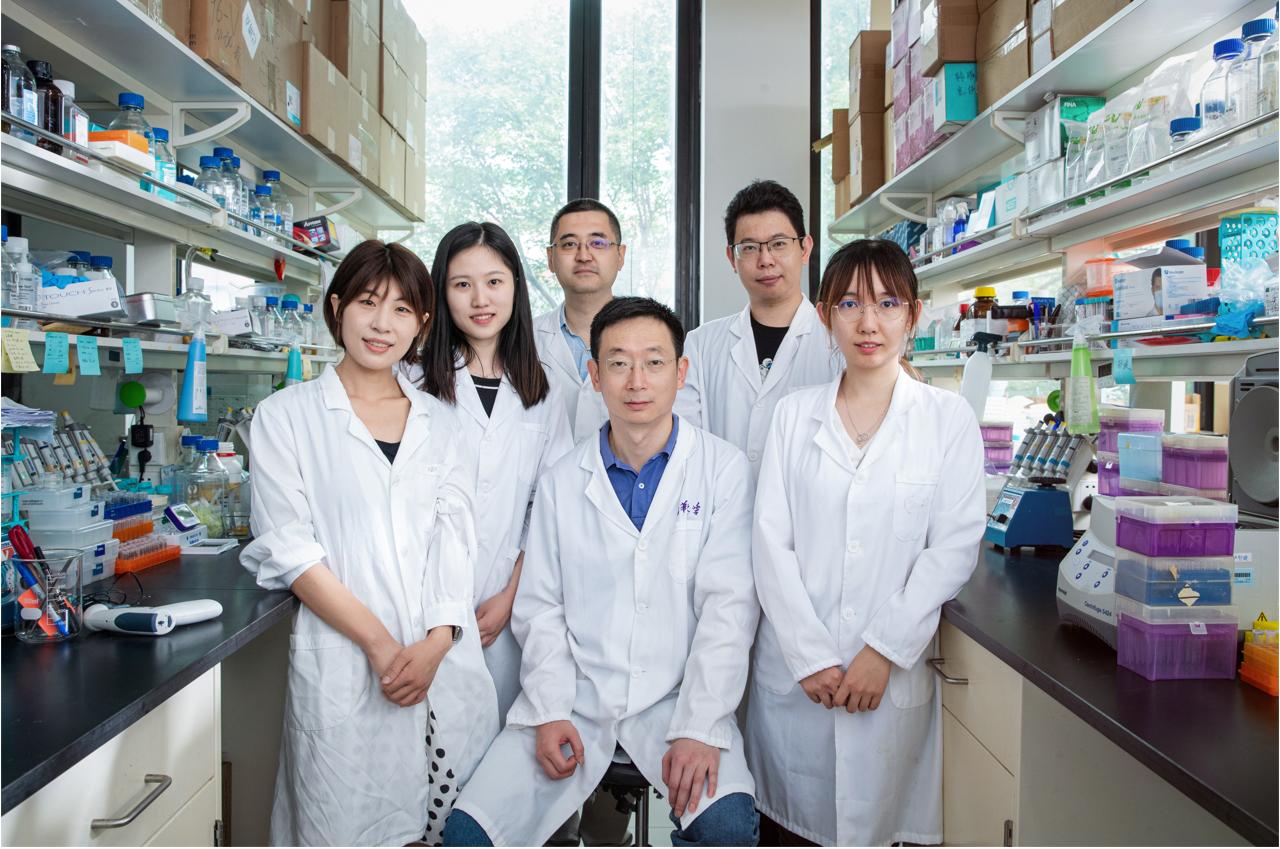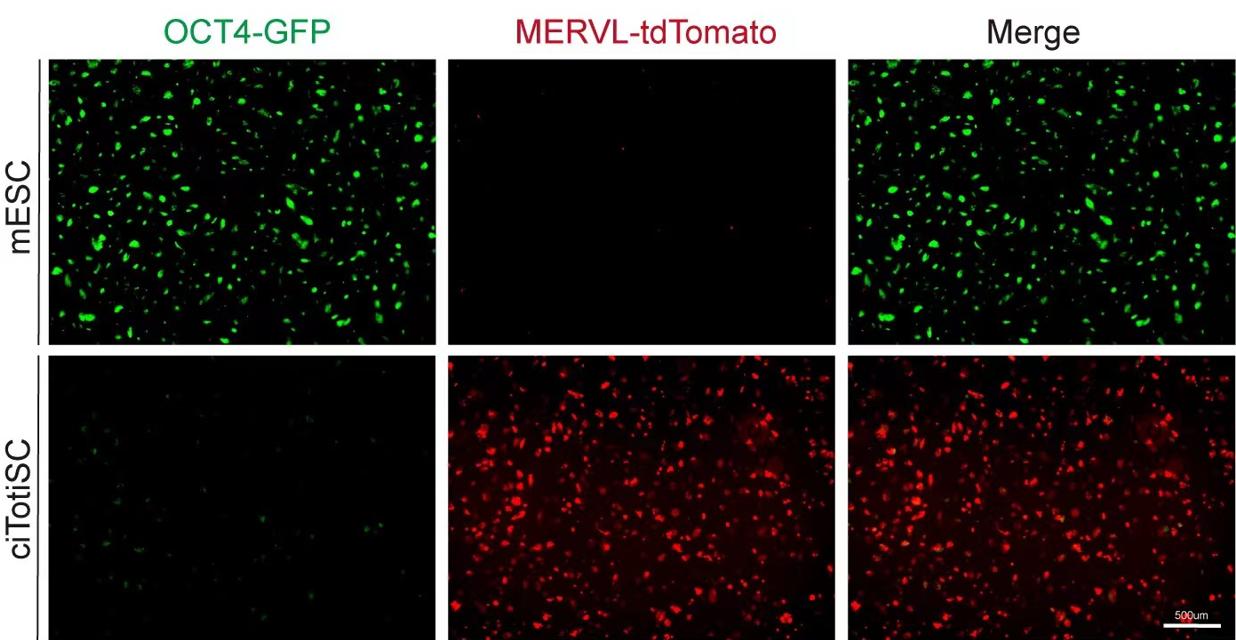--Sheng Ding and his team at Tsinghua University School of Pharmaceutical Sciences publish innovative work in Nature
From cloning to regeneration, how to find alternative paths to create or rejuvenate life has been one of the big questions for biologists. It is this question that’s behind the work of generations of scientists who went on to win Nobel Prizes. It is also this question that drives the recent research led by Sheng Ding at Tsinghua University, School of Pharmaceutical Sciences, now published in the top scientific journal Nature magazine.

In the current study, Ding and colleagues have identified a drug cocktail that induces an all-powerful stem cell type at will, a cell type that can turn into an entire organism on its own. The researchers are also able to maintain the resulting cells’ differentiation potential in the lab, allowing a stable system for later researchers to demystify the creation of life. This alternative path – obtaining a clean slate of life’s earliest raw materials from more mature cells, instead of new sperms and eggs -- can have a wide range of implications. “Such an alternate to nature’s way of creating the beginning of life is a holy grail of biology”, Ding says.
The creation of life starts with one cell. Your blood, brain, and liver cells can all be traced back to this one-cell embryo or zygote.
In nature, a zygote is produced as sperm and egg merge together. And the event kicks off an irreversible process where the zygote divides, forms new cells and the new cells continue to divide and become increasingly specialized.
As specialization is gained, something is lost along the way. Once the one-cell embryo divides and hits the two-cell embryo stage, the later cells will quickly lose the differentiation potential to give rise to all cell types for generating an entire organism and its supportive tissues like the yolk sac and placenta, becoming less potent stem cells.
Scientists call these all-powerful cells in the one-cell and two-cell embryo stages totipotent stem cells. And there are pluripotent and multipotent stem cells further down the continuum. “Normally after totipotent cells, none of the other stem cells have the possibility to turn into a life on its own,” Ding says.
To better study and control the totipotent stem cells, Ding and his team established a system that achieves the induction and maintenance of these cells, and confirmed their identity with stringent criteria.
With 20 years of work and understanding of cell fate and stem cell regulation by chemical compounds, the team selected and screened thousands of small molecule combinations. Through multiple rounds of analyses, they identified three small molecules that could coax mouse pluripotent stem cells into cells exhibiting totipotent characteristics. The researchers called the molecules TAW cocktail. Each letter in TAW stands for a molecule known to regulate a specific cell fate decision. But their combined effect was not known till the current discovery, Ding explains.
Then the researchers examined cells receiving the TAW cocktail treatment in detail, both their totipotency and none-pluripotency. These cells passed strict molecular testing criteria, at all transcriptome, epigenome, and metabolome levels. For example, the team found that hundreds of critical genes were turned on in the TAW cells. These genes are typically found in totipotent cells and have been indicated by other researchers in the field as the bar to determine totipotency. At the same time, genes associated with pluripotent cells were silenced in the TAW cells.
To further prove that the resulting cells have a true totipotent state, the team tested their differentiation potential in vitro, and also injected them into a mouse early embryo to see the differentiation potential in vivo. They found that not only did the cells behave like true totipotent ones in a petri dish, but they also differentiated into both embryonic and extraembryonic lineages in vivo. This is a typical characteristic of normal totipotent cells, which have the potential to develop into both fetus and the surrounding yolk sac and placenta, whereas pluripotent cells can only develop into a fetus.
In addition, when the researchers used special culture conditions for the TAW cocktail-induced totipotent cells, the subsequent cells also showed similar totipotency traits. This observation suggests that the totipotency of TAW-induced cells can be maintained in a lab environment, and thus a stable system is established.
Such a system is important, as it will enable many scientific investigations concerning the beginning of life. For example, scientists can use this system to manipulate the totipotent cells to better understand the highly orchestrated process at the beginning of life. “Certain cells will have to appear at the right time and the right location for life to occur,” Ding says, and one cannot study this without proper tools.
In this sense, “this paper is the first step and opens up tremendous opportunities,” he says.

Chemically induced ciTotiSC from mESC (OCT4-green fluorescence-labeled pluripotent stem cells and MERVL-red fluorescence-labeled totipotent stem cells)
Moreover, having a deeper understanding and thus control over totipotent cells will have a wide range of implications, such as earning a second chance at the creation of individual life and even accelerating the evolution of a species.
Many of the possibilities will spur controversies, Ding acknowledges. It’s worth noting that while those possibilities lie in the distant future, he mentions, it’s hard to predict what society’s ethical concerns will be. After all, the science community hasn’t seen any lighter restrictions around human embryo research in the past decade. But last year, people started to seriously consider extending how long a human embryo can be kept in a petri dish from the original 14-days rule.
While the team is highly conscious of ethical considerations, Ding believes that as scientists their main job is to focus on making discoveries in the present, and lay the ground for future generations. Then the latter will have the knowledge and tools to make decisions.
The paper is available at the following URL: https://www.nature.com/articles/s41586-022-04967-9
Editor: Guo Lili

